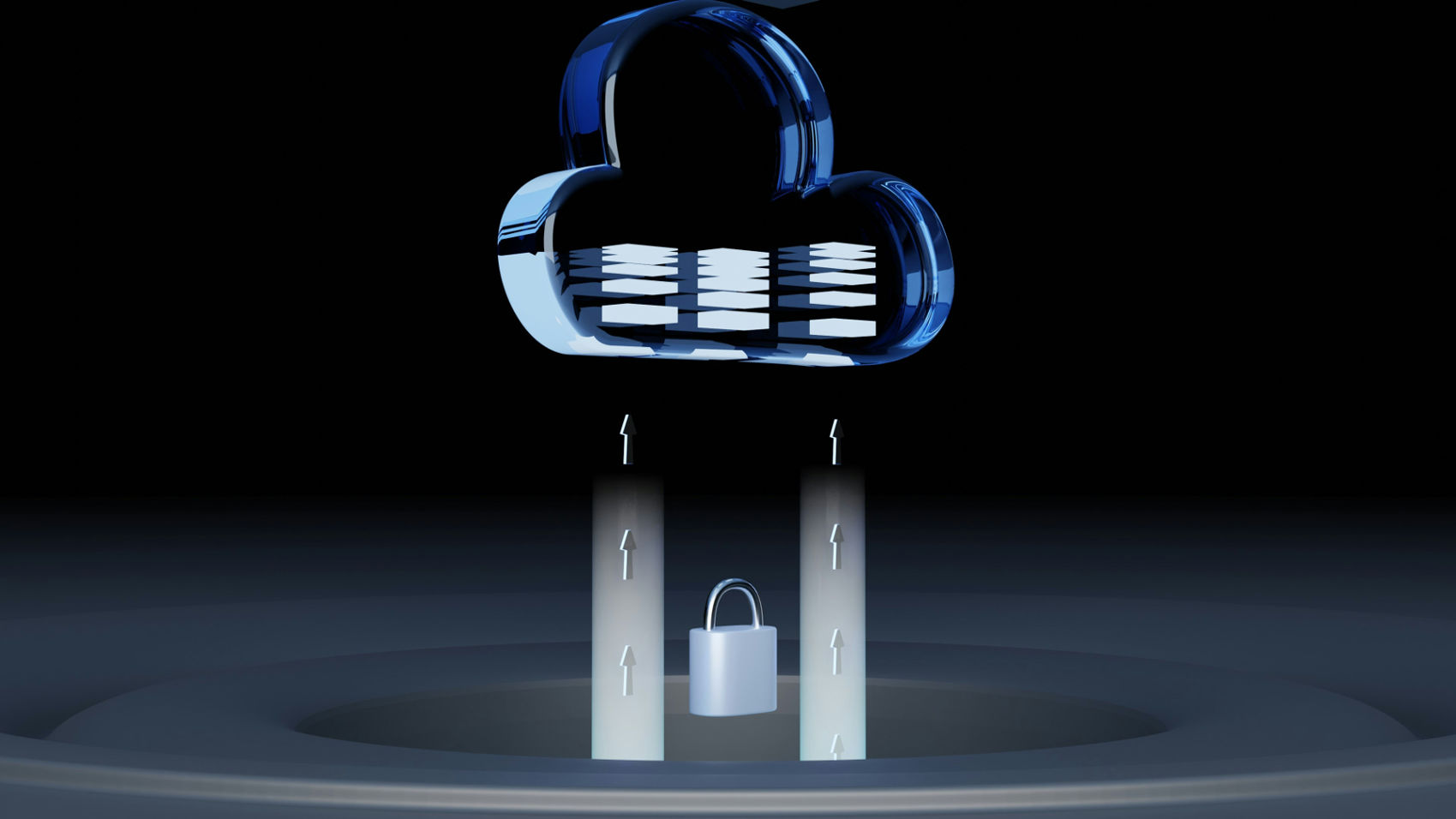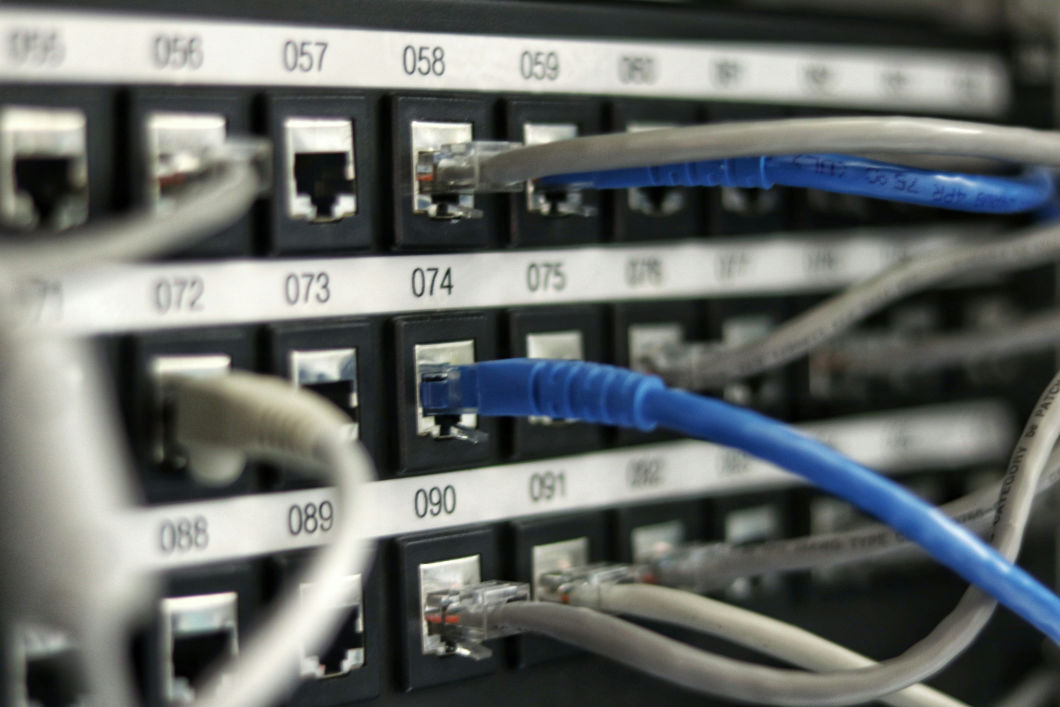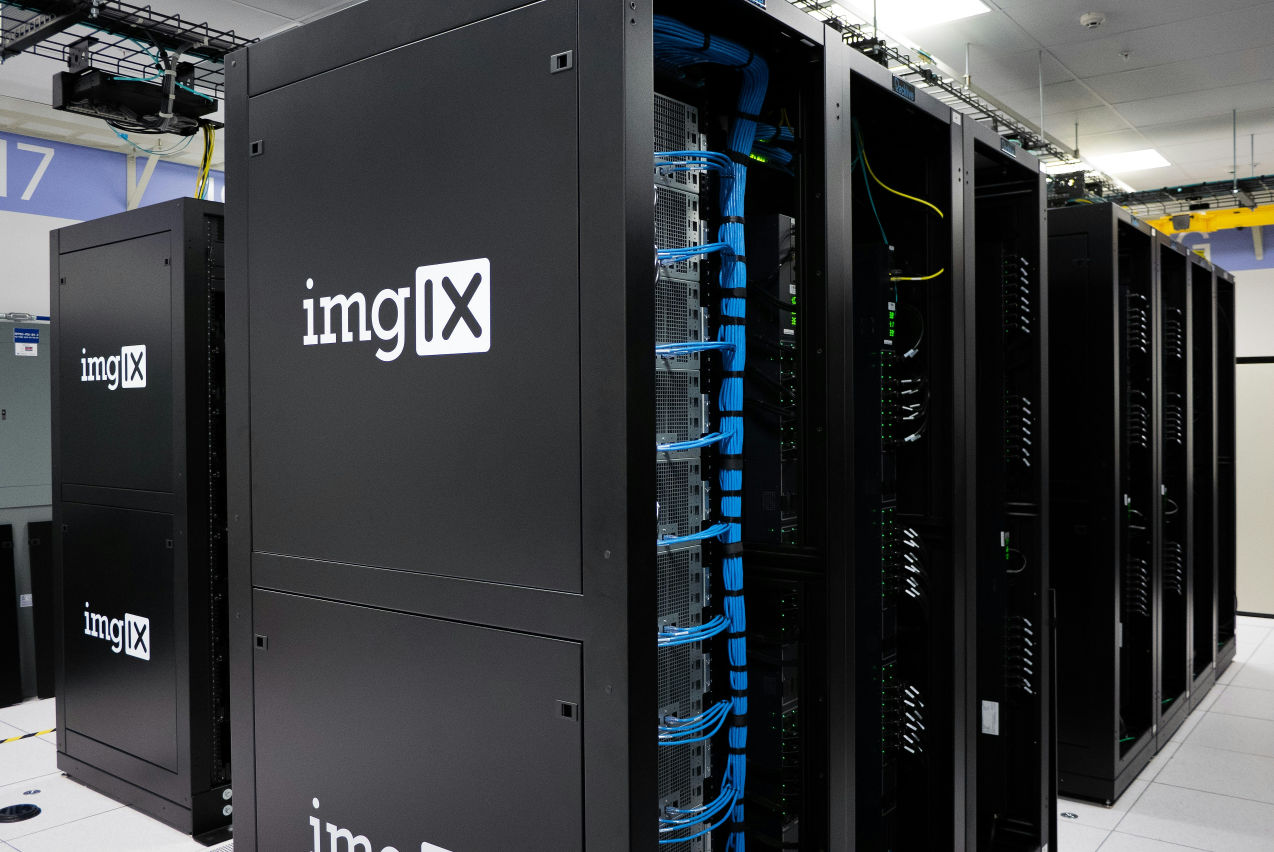Secure Your Network with Advanced Management Solutions

Network Security Management: Strategies and Best Practices
In an era when cyber threats are evolving at an unprecedented pace, network security management is a critical pillar in safeguarding organizations' digital assets. This comprehensive guide delves into the intricacies of network security management, offering actionable strategies and best practices to fortify your network against potential vulnerabilities and attacks.
What is Network Security Management?
At its core, network security management is the collective suite of policies, practices, and tools employed to monitor, detect, and counter threats to network infrastructure. It encompasses a broad spectrum of activities, from access control and malware defense to the implementation of security protocols and the continuous monitoring of network activity.
Understanding Network Security Management
Understanding network security management begins with recognizing its multi-faceted nature. It's not just about installing firewalls or antivirus software; it's about creating a comprehensive strategy that addresses all potential security gaps in the network. This includes protecting data in transit and at rest, ensuring only authorized users have access, and maintaining the integrity and availability of network services.
Network security management is crucial for preventing unauthorized access, data breaches, data theft, and sabotage. In essence, it's about building a resilient network that can withstand both external and internal threats, ensuring the continuity of business operations and the protection of sensitive information.
Security Management Requires Continuous and Active Engagement
Effective network security management is not a one-time setup but a continuous process. It demands active engagement from IT teams to constantly monitor network traffic, analyze security logs, and stay updated with the latest cybersecurity threats and trends.
This proactive approach enables organizations to detect and respond to threats swiftly, minimizing potential damage. It involves regular audits, updates to security protocols, and training for staff to recognize and prevent security incidents. By staying vigilant and responsive, organizations can adapt to the ever-changing cybersecurity landscape and protect their assets against sophisticated attacks.
This can also be associated with the concept that "security is a verb and not a noun," which underscores the dynamic nature of network security management. It's not a one-time setup or a static state but a continuous process of monitoring, updating, and adapting to new threats and vulnerabilities. This perspective emphasizes the proactive aspect of security—actively engaging in practices that ensure the ongoing safety of the network rather than viewing security as a fixed goal or a box to check.
To embody this principle, organizations must foster a culture of security awareness, where employees are educated about the potential risks and the role they play in maintaining security. Regular training, security drills, and awareness campaigns can cultivate a mindset where every member of the organization is vigilant and responsible for the network's security.
The Importance of Network Security Management
The significance of network security management cannot be overstated in today's digital age. As organizations increasingly rely on digital platforms to conduct business, store sensitive information, and communicate, protecting these digital assets becomes paramount. Network security management plays a crucial role in ensuring the confidentiality, integrity, and availability of these assets.
A breach in network security can have devastating consequences, including financial losses, damage to reputation, legal repercussions, and loss of customer trust. Furthermore, the complexity and sophistication of cyber threats are continually evolving, making it imperative for organizations to prioritize network security management to stay ahead of potential threats.
Effective network security management not only helps prevent unauthorized access and cyberattacks but also ensures that the network is resilient and can recover quickly from any incidents. It supports business continuity, protects against data loss, and ensures that critical services remain uninterrupted. In essence, robust network security management is foundational to the trust that stakeholders place in an organization's ability to protect their data and maintain operational integrity.

Role of Network Administrators in Security Management
Network administrators play a pivotal role in security management, acting as the custodians of the network's health and security. They are responsible for designing, implementing, and maintaining the network's architecture in a way that aligns with the organization's security goals and policies.
- Implementing Security Measures: Network administrators are tasked with implementing security measures such as firewalls, intrusion detection systems, and encryption protocols. They ensure these measures are correctly configured and updated to defend against threats.
- Monitoring and Analysis: Constant monitoring of network traffic and analyzing logs are critical responsibilities of network administrators. This vigilance helps in the early detection of unusual activities that could indicate a security breach.
- Responding to Security Incidents: In the event of a security incident, network administrators are often on the front lines, tasked with identifying the breach, containing the threat, and mitigating any damage. They also play a crucial role in the recovery process, restoring systems and data to normal operations.
- Policy Enforcement and Compliance: Ensuring that network security policies are enforced and that the organization complies with relevant security standards and regulations is a key aspect of the network administrator's role. This includes managing access controls and ensuring that security practices align with legal and industry requirements.
- Educating Staff: Network administrators often contribute to cybersecurity training programs, helping to educate employees about security best practices and the importance of following established protocols.
Importance of Network Security Policies
Network security policies are the backbone of a comprehensive security strategy, serving as a roadmap for protecting an organization's digital assets. These policies establish clear guidelines and procedures for all aspects of network security, from defining roles and responsibilities to specifying technical controls and response strategies. By having well-defined network security policies, organizations can ensure consistent implementation of security measures, compliance with regulatory requirements, and a unified approach to addressing and mitigating risks.
These policies also play a critical role in setting expectations for employee behavior regarding the use of network resources and handling of data. They help in fostering a culture of security awareness within the organization, making every employee a stakeholder in the collective security posture. Moreover, in the event of a security incident, having established policies provides a framework for action, enabling a swift and coordinated response that can minimize the impact of the breach.
Access Control and User Management
Access control and user management are critical components of network security management, focusing on ensuring that only authorized individuals have access to specific resources within the network. This is achieved by implementing policies and systems that verify the identity of users and grant access rights based on predefined roles and responsibilities.
Effective access control starts with user authentication, which can include methods such as passwords, biometrics, or multi-factor authentication to verify the identity of users attempting to access the network. Once authenticated, users are granted authorization to access only the resources necessary for their role, known as the principle of least privilege. This minimizes the potential damage that can be done if a user's credentials are compromised.
User management involves the ongoing process of creating, maintaining, and removing user accounts in alignment with changes in staff roles or employment status. It includes the regular review of user access rights to ensure that they remain appropriate to each user's current role and responsibilities.
Threats to Network Security
In the dynamic landscape of information technology, threats to network security are ever-evolving, posing constant challenges to organizations striving to protect their digital environments. Understanding these threats is the first step in developing effective countermeasures. Here, we explore the various types of network attacks and common cyber threats organizations face today.
Types of Network Attacks
Network attacks can come in various forms, each with its own set of tactics and targets. Some of the most prevalent types include:
- Denial of Service (DoS) and Distributed Denial of Service (DDoS) Attacks: These attacks aim to overwhelm network resources, making them unavailable to legitimate users. While DoS attacks originate from a single source, DDoS attacks are launched from multiple compromised devices, amplifying their impact.
- Man-in-the-Middle (MitM) Attacks: In these attacks, the attacker intercepts and possibly alters the communication between two parties without their knowledge. This can compromise the confidentiality and integrity of the data being exchanged.
- Phishing and Spear Phishing: These are types of social engineering attacks where attackers deceive individuals into providing sensitive information. Spear phishing targets specific individuals or organizations, making it more personalized and challenging to detect.
- SQL Injection: By exploiting vulnerabilities in a database-driven application, attackers can use SQL injection attacks to manipulate or steal data from the database.
- Insider Threats: Not all network threats come from outside an organization. Employees or insiders with malicious intent or careless habits can pose significant risks to network security.

Common Cyber Threats
Beyond specific network attacks, there are broader cyber threats that organizations need to be aware of:
- Malware: This encompasses various malicious software types, including viruses, worms, trojan horses, and ransomware. Malware can disrupt operations, steal sensitive information, or gain unauthorized access to network resources.
- Advanced Persistent Threats (APTs): These are prolonged and targeted cyberattacks in which an intruder gains access to a network and remains undetected for an extended period. The goal is often to steal data rather than cause immediate damage.
- Zero-Day Exploits: These are attacks that take advantage of a previously unknown vulnerability in software or hardware. Until the vulnerability is patched, attackers can exploit it to infiltrate networks or steal data.
- Social Engineering: This broad category of threats involves manipulating individuals into breaking standard security procedures. It's a tactic often used in conjunction with other types of cyberattacks.
Social Engineering and Its Impact on Network Security
Social engineering represents a significant threat to network security because it targets the human element, often considered the weakest link in the security chain. This method involves manipulating individuals into divulging confidential information or performing actions that grant attackers access to secure systems and data. Common tactics include phishing, pretexting, baiting, and tailgating, where the attacker uses psychological manipulation to trick users.
The impact of social engineering on network security is profound because it can bypass even the most sophisticated technical safeguards. For instance, an employee tricked into revealing their password can provide an attacker with access to restricted areas of a network, irrespective of the network's firewall or encryption protocols. The success of social engineering attacks underscores the necessity of comprehensive security training and awareness programs that educate employees about the risks and signs of these tactics.
Prevention Systems and Intrusion Detection
Prevention systems and intrusion detection are critical components of a robust network security strategy. Intrusion Detection Systems (IDS) and Intrusion Prevention Systems (IPS) are technologies designed to monitor network and system activities for malicious actions or policy violations. While an IDS operates as a detection and alert system, an IPS plays a more active role by automatically taking steps to block or prevent malicious activity.
These systems use various methodologies to detect anomalies, including signature-based detection, which compares network traffic against a database of known threat signatures, and anomaly-based detection, which monitors network traffic and compares it against an established baseline to detect unusual patterns that may signify a security threat.
Incident Response and Management
Incident response and management are crucial for minimizing the damage of security breaches and restoring normal operations as swiftly as possible. An incident response plan outlines procedures and assigns responsibilities for handling security incidents, ensuring that all team members know their roles during a crisis.
The key phases of incident response typically include preparation, detection and analysis, containment, eradication, recovery, and post-incident analysis. Effective incident management not only focuses on immediate threat neutralization and system recovery but also on learning from the incident to bolster the organization's future security posture. This might involve analyzing the breach to identify vulnerabilities, improving response strategies, and updating policies to prevent similar incidents.
Core Strategies for Effective Network Security Management
In the constantly evolving landscape of cyber threats, effective network security management is paramount for organizations to protect their assets, maintain customer trust, and ensure business continuity. Core strategies in network security management provide the framework and direction necessary to counteract the myriad of cyber threats that businesses face today. One of the pivotal elements in this framework is risk assessment and management, a process that identifies, evaluates, and mitigates risks to network security.
Risk Assessment and Management
Risk assessment and management form the cornerstone of strategic network security planning. This continuous process helps organizations identify vulnerabilities, assess potential threats, and determine the risks they pose to their network infrastructure.
Risk Identification: The first step in risk assessment is identifying the various assets that make up the network infrastructure and the potential threats to these assets. This includes everything from hardware and software components to data and information flows. Identifying assets and their vulnerabilities provides a clear picture of the potential attack surfaces within the organization.
Risk Analysis and Evaluation: Once risks are identified, the next step is to analyze and evaluate them based on their potential impact and the likelihood of their occurrence. This analysis helps in prioritizing risks, enabling organizations to allocate resources effectively to address the most critical vulnerabilities first.
Risk Mitigation: After identifying and evaluating risks, organizations need to develop strategies to mitigate them. This can involve implementing technical controls, such as firewalls, encryption, and intrusion detection systems, as well as administrative controls such as policies, procedures, and training programs. The goal is to reduce the identified risks to an acceptable level, balancing the cost of implementing these measures against the potential impact of the risks.
Monitoring and Review: The risk landscape is dynamic, with new threats emerging and existing vulnerabilities evolving. Continuous monitoring of the network and regular reviews of the risk management strategies are essential to ensure that the organization remains protected against emerging threats. This includes regular updates to risk assessments, revisiting mitigation strategies, and adjusting policies and procedures as necessary.
Communication and Collaboration: Effective risk management is not a siloed process but involves collaboration across various departments within an organization. Communicating risk assessment findings and involving stakeholders in the risk mitigation process ensures that security measures are integrated into the broader organizational processes and that there is a unified approach to managing network security risks.
Implementing Network Security Policies
Network security policies are formal documents that outline an organization's approach to maintaining and securing its network infrastructure. These policies serve as a blueprint, guiding the behavior of users, the implementation of security tools, and the response to security incidents. Implementing these policies effectively requires several key steps:
- Development: The first step is to develop comprehensive security policies that address all aspects of network security, from user access control to data protection and incident response. These policies should be aligned with the organization's business objectives, compliance requirements, and risk management strategies.
- Communication: Once developed, these policies should be clearly communicated to all employees, contractors, and relevant stakeholders. Ensuring that everyone understands their roles and responsibilities in maintaining network security is crucial for the policies to be effective.
- Enforcement: Policies only work if they are enforced consistently. This involves using technical controls to enforce policy compliance and administrative measures to ensure that individuals adhere to the prescribed guidelines. Regular audits and assessments can help verify compliance and identify areas where enforcement may be lacking.
- Regular Updates: As technology evolves and new threats emerge, network security policies should be reviewed and updated regularly to remain effective. This ensures that the policies reflect the current threat landscape, technological environment, and business objectives of the organization.
Continuous Monitoring and Incident Response
Proactive monitoring and a robust incident response capability are vital for detecting and responding to security threats promptly.
- Continuous Monitoring: Continuous monitoring involves the ongoing observation of network activity to detect and respond to threats in real time. This includes monitoring network traffic, user activities, and system logs to identify unusual or suspicious behavior that could indicate a security threat.
- Incident Response: Despite the best preventive measures, incidents can still occur. A well-defined incident response plan ensures that the organization can react swiftly and effectively to contain and mitigate the impact of security incidents. This plan should outline the steps to be taken in the event of an incident, assign responsibilities to team members, and provide guidelines for communicating with stakeholders during and after an incident.
- Learning from Incidents: After an incident has been resolved, conducting a post-incident review is crucial. This review helps the organization understand what happened, why it happened, and how similar incidents can be prevented in the future. Lessons learned should be integrated back into the organization's security policies, procedures, and training programs to improve overall security posture.
Network Security Tools and Technologies
In the realm of network security, various tools and technologies are pivotal in safeguarding an organization's digital infrastructure. Among these, firewalls, Intrusion Detection/Prevention Systems (IDPS), and Virtual Private Networks (VPN) with encryption stand out as foundational elements that help maintain the confidentiality, integrity, and availability of network resources.
Firewalls
Firewalls are one of the first lines of defense in a network security architecture, acting as gatekeepers between networks, such as an internal network and the internet. They monitor and control incoming and outgoing network traffic based on predetermined security rules. By defining which traffic is allowed or blocked, firewalls help prevent unauthorized access to or from a network. Modern firewalls are not just limited to blocking or allowing traffic; they can also inspect the data within the packets to identify and block more sophisticated threats.
Intrusion Detection/Prevention Systems (IDPS)
Intrusion Detection/Prevention Systems are critical components that monitor network and system activities for malicious actions or policy violations. An intrusion detection system (IDS) passively scans the network for potential threats and alerts the system administrators, whereas an intrusion prevention system (IPS) actively blocks potential threats based on the detected anomalies. These systems utilize various detection methods, such as signature-based detection to match known threat patterns and anomaly-based detection to identify deviations from normal behavior, thereby providing a robust mechanism to identify and thwart potential security breaches.
.jpeg)
Virtual Private Network (VPN) and Encryption
VPNs and encryption are essential technologies for securing data in transit. A VPN creates a secure, encrypted tunnel over a public network, such as the Internet, allowing remote users to access the organization's network securely. This is particularly important for mobile workers or when using untrusted networks. Encryption plays a crucial role in this process, as it ensures that even if data is intercepted, it remains unreadable without the correct decryption key. Together, VPNs and encryption protect the confidentiality and integrity of data as it travels across networks, ensuring that sensitive information is shielded from unauthorized access.
Vulnerability Scanners
Vulnerability scanners are critical tools in the arsenal of network security, designed to automatically scan systems, networks, and applications to identify and report potential vulnerabilities. These tools play a key role in proactive security measures, allowing organizations to detect and rectify weaknesses before attackers can exploit them. By regularly scanning the network, these scanners provide continuous insight into the security posture of an organization, highlighting areas that require attention and enabling IT teams to prioritize and address risks effectively.
Security Analytics and Intelligence
Security analytics and intelligence involve the collection, aggregation, and analysis of data to identify patterns, detect anomalies, and respond to potential security threats. This advanced approach leverages machine learning, artificial intelligence, and big data technologies to provide a deeper understanding of the security environment. By analyzing historical and real-time data, security analytics can uncover subtle, sophisticated threats that might elude traditional security measures, offering insights that guide strategic security decisions and improve the overall resilience of network defenses.
Data Encryption and Secure Communication
Data encryption and secure communication are fundamental to protecting the integrity and confidentiality of information as it travels across networks and resides on devices. Encryption transforms data into a coded format that can only be read by someone with the key to decode it, providing a strong layer of protection against interception and unauthorized access. In addition to encrypting data at rest, ensuring secure communication channels, such as using SSL/TLS for web transactions or encrypting email communications, is crucial. This ensures that data remains protected not only where it is stored but also as it moves across the network, safeguarding against eavesdropping and man-in-the-middle attacks.
Best Practices for Network Security Management
In network security management, adhering to best practices is not just about deploying the latest tools and technologies. It's about establishing a foundation of solid, well-thought-out strategies that encompass various aspects of security, from policy formulation to the implementation of technical controls. Two critical components of these best practices include developing a comprehensive network security policy and implementing robust access controls and user authentication mechanisms.
Developing a Comprehensive Network Security Policy
A comprehensive network security policy is the cornerstone of effective network security management. This policy serves as a blueprint that outlines the organization's approach to protecting its network and information assets. Developing such a policy involves several key steps:
- Assessment: Begin by assessing the current network infrastructure, identifying critical assets, and understanding potential threats and vulnerabilities. This assessment forms the basis for developing a policy that addresses the specific needs and risks of the organization.
- Stakeholder Involvement: Involve stakeholders from various departments to ensure that the policy covers all aspects of the organization's operations and addresses the concerns and needs of different areas.
- Policy Framework: The policy should include guidelines for all areas of network security, including but not limited to user access, data protection, incident response, and compliance with relevant laws and regulations. It should also define roles and responsibilities for implementing and maintaining security measures.
- Training and Awareness: Include provisions for ongoing training and awareness programs to ensure that all employees understand their roles in maintaining network security and are aware of the latest threats and best practices.
- Review and Update: Establish a process for regularly reviewing and updating the network security policy to adapt to new threats, technological changes, and evolving business objectives.
Implementing Access Controls and User Authentication
Access controls and user authentication are critical for ensuring that only authorized users can access sensitive information and network resources. Implementing these controls effectively involves several key considerations:
- Least Privilege Principle: Ensure that users are granted only the access rights necessary to perform their job functions. This minimizes the risk of unauthorized access to sensitive information and limits potential damage in case a user's credentials are compromised.
- Strong Authentication Mechanisms: Implement strong authentication methods, such as multi-factor authentication, to verify the identity of users accessing the network. This adds an additional layer of security beyond just passwords, reducing the risk of unauthorized access.
- User Account Management: Establish processes for creating, modifying, and deactivating user accounts in a timely and secure manner. This includes procedures for handling employee turnover, role changes, and periodic reviews of user access rights.
- Monitoring and Logging: Monitor and log access to sensitive resources to detect and respond to unauthorized access attempts or suspicious activities. This not only helps in identifying potential security incidents but also provides an audit trail for forensic analysis.
Regular Network Vulnerability Assessments
Conducting regular network vulnerability assessments is an essential practice in network security management. These assessments provide a systematic evaluation of the network for any potential vulnerabilities attackers could exploit. By identifying and addressing these vulnerabilities proactively, organizations can significantly reduce their risk exposure. The process involves scanning the network infrastructure, including hardware, software, and services, to detect weaknesses or flaws. Following the identification of vulnerabilities, prioritizing them based on their potential impact and the likelihood of exploitation is crucial. Remediation efforts should then be promptly implemented to mitigate identified risks, enhancing the overall security posture of the network.
Training and Awareness Programs for Employees
Employee training and awareness programs are vital in fortifying an organization's network security. Human error or lack of knowledge can often lead to security breaches, making it imperative for all employees to understand the role they play in maintaining security. These programs should educate employees about the various types of security threats, such as phishing, malware, and social engineering attacks, and provide clear guidelines on how to respond to suspicious activities. Regular updates and refresher courses can help keep security at the forefront of employees' minds and ensure they are aware of the latest threats and best practices in cybersecurity.
Backup and Disaster Recovery Strategies
Having robust backup and disaster recovery strategies is a critical component of network security management. These strategies ensure that an organization can recover critical data and resume operations quickly in the event of a security breach or other disasters. Effective backup strategies involve regularly saving copies of essential data in multiple secure locations. This redundancy helps protect against data loss from various threats, including ransomware attacks, hardware failures, and natural disasters. Disaster recovery planning outlines the procedures to restore data and system functionality swiftly, minimizing downtime and operational impact. Testing these plans regularly ensures they are effective and that the organization is prepared to respond to and recover from disruptive incidents.
Benefits of Network Security Management
Network security management offers a multitude of benefits that extend beyond just protecting an organization's digital assets. It provides cost benefits, secures cloud access, and ensures robust endpoint security, each contributing to the overall resilience and efficiency of the organization.

Cost Benefits
Investing in network security management can result in significant cost benefits for organizations. While the initial investment in security measures might seem substantial, it is far less than the potential costs associated with a security breach, including data recovery, legal fees, fines for non-compliance, and the loss of customer trust and business reputation. Effective network security management helps prevent such breaches, thereby avoiding these costs. Additionally, a well-secured network is more efficient, reducing downtime and increasing productivity, which in turn contributes to the organization's financial health.
Secure Cloud Access
As organizations increasingly adopt cloud services, securing access to the cloud becomes paramount. Network security management plays a crucial role in ensuring that data transmitted to and from the cloud is protected, maintaining the confidentiality, integrity, and availability of information. By implementing security protocols, encryption, and secure access controls, organizations can leverage the benefits of cloud computing while minimizing the risks associated with online data storage and processing. This not only protects valuable data but also facilitates safe and efficient remote access, a necessity in today's increasingly mobile and decentralized work environments.
Robust Endpoint Security
In an era where the workforce is more mobile and diverse than ever, ensuring robust endpoint security is a critical aspect of network security management. Endpoints, which include laptops, smartphones, and other devices connecting to the network, can be vulnerable entry points for attackers. Organizations can monitor, manage, and protect these devices from threats by implementing comprehensive endpoint security measures, irrespective of their location. This includes deploying antivirus software, implementing device management policies, and ensuring that all endpoints comply with the organization's security standards. Robust endpoint security not only protects the network but also ensures that employees can work safely and productively, regardless of their location.
Efficient Security Compliance
Network security management significantly contributes to efficient security compliance, ensuring organizations adhere to various regulatory requirements and industry standards. Compliance is not just about avoiding penalties but also about establishing a trust framework with customers and partners, demonstrating a commitment to protecting sensitive information. Efficient security compliance involves understanding the specific regulations applicable to the organization, implementing the required controls and policies, and maintaining documentation and evidence of compliance. This proactive approach not only minimizes the risk of non-compliance and associated fines but also streamlines the process of auditing and reporting, making it less burdensome and more integrated into the organization's daily operations.
More Efficient IT Performance
Effective network security management leads to more efficient IT performance by reducing the incidence and impact of security-related disruptions. A secure network is inherently more stable and reliable. When cybersecurity measures prevent breaches and minimize vulnerabilities, there is less downtime caused by incidents or maintenance to rectify security flaws. This efficiency extends to IT resources as well, as a well-managed network allows IT professionals to focus on strategic initiatives and innovation rather than constantly firefighting security issues. Moreover, optimized network security can enhance system performance by preventing unauthorized access and ensuring that network resources are used as intended, contributing to the overall productivity and efficiency of the organization.
Threat Monitoring and Neutralization
A core benefit of network security management is its capability for ongoing threat monitoring and neutralization. Continuous monitoring of network activities enables the early detection of potential security threats, allowing for prompt response before these threats can cause significant damage. This proactive stance includes identifying unusual behavior patterns, monitoring for known threats, and staying updated on emerging risks. When threats are detected, network security management systems can immediately take steps to neutralize them, whether through automated processes or by alerting security personnel to intervene. This constant vigilance helps maintain the integrity and availability of the network, ensuring that the organization's operations and sensitive data remain secure from both external and internal threats.
Streamlined Data Recovery and Crisis Response
Network security management significantly enhances an organization's ability to recover data and respond to crises effectively. With comprehensive backup strategies and detailed incident response plans in place, organizations can swiftly restore lost or compromised data, minimizing operational downtime and the impact of security incidents. This streamlined approach to data recovery is crucial in maintaining business continuity, especially in the face of increasingly sophisticated cyber threats. Moreover, a well-structured crisis response mechanism enables organizations to mobilize their resources quickly, contain threats, and mitigate damages, ensuring that they can resume normal operations with minimal delay and less financial impact.
Network Simplification and Performance Benefits
Effective network security management can lead to network simplification and associated performance benefits. By regularly reviewing and optimizing the network's security architecture, organizations can eliminate redundant systems and streamline processes, which, in turn, enhances network efficiency and performance. Simplification reduces complexity, making the network easier to monitor, manage, and secure. It also improves system performance by eliminating unnecessary overhead and ensuring that security measures do not hinder network speed and reliability. This results in a more responsive and agile IT infrastructure capable of supporting the organization's objectives and adapting to new challenges.
Easy Staff Onboarding and Security Policy Propagation
One of the notable advantages of robust network security management is the facilitation of easy staff onboarding and the effective propagation of security policies throughout the organization. A well-defined security framework with clear policies and protocols helps new employees understand their roles and responsibilities in maintaining network security from day one. This integration of security into the onboarding process ensures that all staff members are aligned with the organization's security culture and practices, reducing the risk of human error or non-compliance. Additionally, having a centralized management system allows for the consistent application and enforcement of security policies, ensuring that all employees, regardless of their location or department, adhere to the same standards and protocols.
Emerging Trends in Network Security Management
The field of network security is constantly evolving, with new trends emerging as technology advances and the digital landscape changes. Two significant trends shaping the future of network security management are cloud-based network security solutions and integrating mobile device security within Bring Your Own Device (BYOD) policies.

Cloud-based Network Security Solutions
Cloud-based network security solutions are becoming increasingly popular due to their scalability, flexibility, and cost-effectiveness. These solutions leverage cloud computing to deliver security services that can adapt to the changing needs of businesses, offering comprehensive protection against a wide array of threats. Cloud-based security provides organizations with the ability to deploy and manage security measures remotely, making it easier to protect assets across multiple locations. Additionally, cloud security providers can offer access to the latest security technologies and updates, ensuring that organizations can defend against the most recent threats. This model also facilitates better collaboration and data sharing within the security community, enhancing the overall effectiveness of network security strategies.
Mobile Device Security and BYOD Policies
With the increasing prevalence of smartphones and tablets in the workplace, mobile device security has become a critical component of network security management. The BYOD (Bring Your Own Device) trend, where employees use their personal devices for work purposes, introduces a range of security challenges, including the risk of data leakage, loss, or unauthorized access to corporate networks. Organizations are implementing comprehensive BYOD policies that outline acceptable use, security requirements, and user responsibilities to address these challenges. Mobile device management (MDM) and mobile application management (MAM) solutions are commonly employed to enforce these policies, allowing organizations to manage and secure mobile devices that access their networks remotely. Ensuring that these devices are properly secured helps protect the organization's data and network infrastructure from mobile-related threats, aligning with the broader goals of network security management.
Internet of Things (IoT) and its Impact on Network Security
The Internet of Things (IoT) is transforming how we interact with the world around us, connecting a myriad of devices to the internet and each other. This interconnectedness, while bringing numerous benefits, also introduces significant challenges to network security. Every connected device represents a potential entry point for cyber attackers, increasing the complexity of securing networks. The diversity of IoT devices, each with its unique configurations and operating systems, complicates the task of implementing uniform security measures.
To address these challenges, network security management must evolve to include comprehensive visibility and control over IoT devices. This includes the ability to identify and authenticate devices, monitor their activities for suspicious behavior, and ensure that they are regularly updated with the latest security patches. Segmenting the network to isolate IoT devices from critical network resources can also mitigate the risk of a compromised device affecting the entire network.
Artificial Intelligence and Machine Learning in Network Security
Artificial intelligence (AI) and machine learning (ML) are revolutionizing network security management by providing advanced tools to detect, analyze, and respond to threats more efficiently and effectively. These technologies can analyze vast amounts of data in real time, identifying patterns and anomalies that may indicate a security threat. By learning from historical data, AI and ML algorithms can adapt and improve over time, enhancing their ability to predict and prevent future attacks.
AI and ML are particularly effective in combating sophisticated cyber threats that traditional security tools might overlook. They can automate the process of monitoring network traffic and detecting deviations from normal behavior, enabling security teams to focus on high-priority threats. Furthermore, AI-driven security solutions can provide actionable insights and recommendations, helping organizations respond to incidents more swiftly and make informed decisions about their security strategies.
Network Security Management in Organizations
Network security management is a critical concern for organizations of all sizes and industries, each facing unique challenges and considerations. The approach to network security can vary significantly depending on the size of the organization and the nature of the industry it operates in.
Network Security Management in Small, Medium, and Large Organizations
Small Organizations: Small businesses often operate with limited resources and may not have dedicated IT security staff. For them, network security management might focus on fundamental practices like using firewalls, updating systems regularly, and educating employees about basic security hygiene. Despite their size, small organizations are still targets for cyberattacks and must balance cost-effective security solutions with the need to protect sensitive data.
Medium-sized Organizations: As organizations grow, their network infrastructure becomes more complex, necessitating more sophisticated security measures. Medium-sized businesses might have more resources than small ones but can still find themselves balancing between the need for advanced security measures and budget constraints. They might start to integrate more comprehensive security solutions, like intrusion detection systems, and formalize their network security policies and procedures.
Large Organizations: Large enterprises typically have complex networks and handle vast amounts of sensitive data, making advanced and layered security measures essential. These organizations likely have dedicated cybersecurity teams responsible for implementing and managing a wide range of security tools and strategies, from advanced threat detection and response systems to regular security audits and compliance checks. Large organizations often need to adhere to strict regulatory requirements, adding another layer of complexity to their network security management.
Challenges and Considerations for Network Security in Different Industries
The industry in which an organization operates can significantly influence its network security management strategy. Different industries face unique challenges and regulatory requirements that shape their approach to securing networks.
Healthcare: Organizations in the healthcare industry must comply with regulations like HIPAA, which requires protecting patient information. Network security in healthcare not only focuses on protecting sensitive data but also ensuring that medical devices and systems are secure and cannot be compromised.
Financial Services: The financial sector is a prime target for cybercriminals due to the valuable financial data these organizations handle. Banks and financial institutions must implement robust security measures to protect against sophisticated cyberattacks and comply with financial industry regulations.
Retail: Retailers, especially those with significant online operations, must secure their networks to protect customer data and financial transactions. They need to manage the security of their e-commerce platforms while ensuring that their network can handle high traffic volumes, especially during peak shopping periods.
Manufacturing and Critical Infrastructure: These industries must protect their networks to ensure operational continuity and safeguard against threats that could disrupt manufacturing processes or critical services. The integration of IoT devices into their networks introduces additional security considerations.
Compliance and Regulatory Requirements
Compliance with regulatory requirements is a crucial aspect of network security management, as non-compliance can result in significant penalties, legal issues, and damage to an organization's reputation. Different industries and regions are subject to various regulations designed to ensure the protection of sensitive information and the integrity of network systems.
Organizations must be aware of the specific regulations that apply to them, which could include standards like GDPR for data protection in Europe, HIPAA for healthcare information in the United States, or PCI DSS for organizations that handle credit card transactions. Compliance involves implementing the necessary security measures, maintaining proper documentation, conducting regular audits, and ensuring that all network security practices are in alignment with the required standards. It's not just about avoiding penalties but also about building trust with customers and partners by demonstrating a commitment to safeguarding data and maintaining a secure network environment.
Managing Network Security in Remote and Distributed Environments
The rise of remote work and distributed environments has introduced new challenges in managing network security. With employees accessing the network from various locations and often using personal devices, the traditional security perimeter has expanded, making it more challenging to monitor and protect.
To manage network security effectively in these environments, organizations must adopt a zero-trust security model, which operates on the principle of "never trust, always verify." This approach requires verifying the identity and integrity of devices and users, regardless of their location, before granting access to network resources.
Implementing robust VPN solutions, enforcing strong authentication methods, and utilizing endpoint security measures are critical components of securing remote access. Additionally, organizations need to consider the security of cloud services and SaaS applications, as these are often integral to remote work environments.
Education and training are also vital in remote settings, as employees need to be aware of the security risks associated with remote work and the best practices for mitigating these risks. This includes secure use of Wi-Fi networks, understanding phishing threats, and maintaining the security of personal devices used for work purposes.
Importance of continuous network security management
The importance of continuous network security management cannot be overstated in today's digital landscape, where the frequency and sophistication of cyber threats continue to escalate. This ongoing process is vital for protecting an organization's data, maintaining customer trust, ensuring compliance, and preserving the overall integrity and availability of network services.
Continuous network security management ensures that an organization can swiftly adapt to new threats and vulnerabilities. Cyber threats evolve rapidly, with attackers constantly devising new methods to exploit network weaknesses. Continuous monitoring and management allow organizations to detect and respond to these threats in real time, reducing the potential for significant damage or data loss.
Moreover, the regulatory environment for data protection and privacy is becoming increasingly stringent. Continuous network security management helps organizations stay compliant with evolving regulations and standards, avoiding hefty fines and reputational damage that can arise from compliance failures.
Customer trust is another critical aspect tied to network security. Customers expect their data to be handled securely and responsibly. Any breach can severely erode trust and deter customers from doing business with an organization. Continuous management demonstrates a commitment to security, helping to build and maintain customer confidence.
The integration of new technologies and the expansion of networks also necessitate ongoing security management. As organizations adopt new technologies or expand their operations, new vulnerabilities may emerge. Continuous security management ensures that security keeps pace with changes in the network architecture and technology landscape.

How RedZone Technologies can help with Network Security Management
RedZone delivers thorough IT Security Assessment Professional Services to identify vulnerabilities and strengthen defenses. RedZone Technologies is well-positioned to assist organizations in bolstering their network security management through a combination of strategic partnerships and innovative solutions. By leveraging these assets, RedZone Technologies can provide comprehensive support to businesses looking to enhance their network security posture.
Key Partnerships
RedZone Technologies establishes partnerships with leading industry vendors and security experts, offering a range of advanced tools and services to its clients. These partnerships enable RedZone to deliver cutting-edge security technologies and best practices that are crucial for effective network security management. By collaborating with renowned cybersecurity firms, RedZone ensures that it has access to the latest security insights, threat intelligence, and technological innovations. These partnerships not only enhance RedZone's service offerings but also allow clients to benefit from a collaborative approach to security that leverages collective expertise and resources.
Featured Solutions
RedZone Technologies provides a suite of featured solutions tailored to address various aspects of network security management. These solutions might include:
- Advanced Threat Detection and Response: Utilizing AI and machine learning technologies, RedZone offers solutions that can identify and neutralize sophisticated threats in real-time, ensuring that network security breaches are contained swiftly and effectively.
- Virtual Security Operations: Our Virtual Security Operations offers expertly managed security services that monitor and protect your digital environment around the clock.
- Compliance and Risk Management: RedZone's solutions can help organizations navigate the complex landscape of regulatory compliance, providing tools and expertise to ensure that network security practices meet industry standards and regulations.
- Endpoint Security: Recognizing the critical role of endpoint devices in network security, RedZone offers solutions to monitor, manage, and secure these devices, ensuring that they do not become the weak links in the security chain.
- Security Awareness Training: RedZone understands that human factors play a significant role in network security. As such, it provides training programs to educate employees about cybersecurity best practices and emerging threats, empowering them to contribute to the organization's security posture actively.
- Incident Response and Forensics: In the event of a security breach, RedZone's incident response services can help organizations quickly recover, while forensic analysis can provide insights into the attack, helping to prevent future incidents.
Explore the options at RedZone Products Featuring a selection of security products tailored to address specific challenges in safeguarding digital assets.
Conclusion
Network security management is a critical aspect of modern organizational operations, ensuring the protection of digital assets against an evolving landscape of cyber threats. The discussions highlighted the importance of implementing robust strategies, understanding emerging trends, and recognizing the unique challenges presented by different organizational sizes and industries.
Organizations must prioritize continuous network security management to safeguard sensitive data, maintain customer trust, ensure regulatory compliance, and support business continuity. This involves not only deploying advanced security tools and technologies but also fostering a culture of security awareness among employees and continuously adapting to new threats and changing regulatory landscapes.
As the digital realm grows and transforms, so too must the approaches to network security management. By staying informed, vigilant, and proactive, organizations can build resilient defenses that not only protect their current assets but also prepare them for the security challenges of the future.
In this dynamic environment, leveraging expertise and solutions from specialized security providers can offer valuable support and enhancements to an organization's security posture. Providers like RedZone Technologies, with their key partnerships and featured solutions, can offer tailored services and cutting-edge technologies to address the specific security needs of various organizations, helping them navigate the complexities of network security management effectively.
Our extensive Resources library provides valuable insights and guidance on maintaining a resilient cybersecurity posture. For more information on securing your organization's future with proactive cybersecurity measures, Contact us today.
FAQs
What are the common mistakes organizations make in network security management?
One of the common mistakes organizations make is neglecting regular updates and patch management, which leaves systems vulnerable to attacks exploiting known vulnerabilities. Another frequent error is inadequate employee training on cybersecurity, leading to an increased risk of breaches through social engineering or human error. Organizations often underestimate the importance of comprehensive risk assessments, resulting in insufficient security measures that fail to cover all potential threats. Additionally, many fail to implement a robust incident response plan, leaving them unprepared to respond to and recover from security incidents effectively. Over-reliance on perimeter security without focusing on internal threats and network segmentation can also be a critical oversight. Lastly, failing to monitor and adapt to the evolving cybersecurity landscape can leave organizations vulnerable to emerging threats.
How can small businesses implement effective network security management with limited resources?
Small businesses can focus on several key strategies to enhance their network security. First, prioritizing basic security measures such as using strong passwords, enabling two-factor authentication, and installing reputable antivirus software can provide foundational protection. Regularly updating software and systems helps guard against known vulnerabilities. Small businesses should also conduct basic risk assessments to identify and prioritize their most critical assets and vulnerabilities. Implementing employee training programs on cybersecurity awareness can significantly reduce the risk of breaches. Additionally, small businesses can leverage cost-effective cloud-based security solutions that offer scalability and up-to-date protection. Establishing relationships with local cybersecurity groups or industry associations can provide additional support and resources. For more specialized needs, considering outsourcing certain security functions to managed security service providers can be a cost-effective way to access expert knowledge and capabilities.
How does compliance affect network security management?
Compliance significantly impacts network security management by dictating specific security standards and protocols that organizations must follow. These regulations are often designed to protect sensitive data and ensure a baseline of security practices across industries. Compliance requirements can drive organizations to adopt more structured and rigorous security measures, perform regular security assessments, and maintain detailed records of their security policies and incident response actions. While compliance helps in establishing essential security practices, organizations should view it as a starting point rather than the entirety of their security strategy. Beyond meeting compliance requirements, proactive and comprehensive security measures tailored to the organization's specific risks and needs are crucial for robust network security management.
How should organizations respond to a network security breach?
When an organization experiences a network security breach, it should follow a well-prepared incident response plan, which typically includes the following steps:
- Identification and Assessment: Quickly determine the scope and impact of the breach. Identify which systems, data, or networks are affected and assess the severity of the incident.
- Containment: Take immediate steps to contain the breach and prevent further unauthorized access or data loss. This may involve isolating affected systems, disconnecting them from the network, or taking other emergency actions to limit the spread of the breach.
- Eradication: Once contained, identify and remove the root cause of the breach to prevent recurrence. This may involve removing malware, closing security vulnerabilities, or addressing the source of unauthorized access.
- Recovery: Restore and return affected systems and services to normal operations, ensuring they are no longer compromised. Test the affected systems to ensure that they are fully functional and secure.
- Communication: Communicate transparently with stakeholders, including employees, customers, partners, and regulators, about the breach and the organization's response, in accordance with legal requirements and industry best practices.
- Post-Incident Analysis: After addressing the immediate concerns, conduct a thorough review of the incident and the organization's response. Identify lessons learned, document the incident and response actions, and update the incident response plan and security measures to prevent future breaches.
By following these steps, organizations can manage and mitigate the effects of a security breach, preserving their reputation and minimizing potential damage.
 Security Updates
Security UpdatesUnderstanding IT Compliance: Scope, Benefits, and Challenges
Discover what IT compliance is, its importance, benefits, risks of non-compliance, frameworks, and how to achieve robust IT compliance in your organization.
 Security Updates
Security UpdatesImplement Secure Browsing with Powerful SSL Decryption
Explore the essentials of SSL decryption, its importance, challenges, and best practices for enhancing security and compliance for business in a detailed guide
 Security Updates
Security UpdatesTransitioning from Proxy Firewalls to Endpoint Security
Explore the evolution from proxy firewalls to endpoint security, enhanced threat detection, data encryption, and comprehensive protection for modern networks.
 Security Updates
Security UpdatesExpert IT Risk Assessment: Protect Your Business Today!
Mitigate potential IT threats with our comprehensive risk assessment guide, ensuring your digital infrastructure. Ensure your business is secure an...
 Security Updates
Security UpdatesEssential Guide to Best Practices in Compliance Security
Explore essential strategies for compliance security in this comprehensive guide. Learn about safeguarding your business and meeting regulatory sta...
 Security Updates
Security UpdatesSecure Your Data with Expert Cloud Database Solutions
Learn efficient solutions and secure your cloud databases with encryption and compliance features, ensuring data safety and privacy across all plat...
 Security Updates
Security UpdatesA Guide to Cloud Network Technology: Benefits and Types
Unlock the potential of cloud network technology for seamless connectivity. Learn and scale solutions that drive business innovation and growth via...
 Security Updates
Security UpdatesAffordable Managed IT Services for Small Businesses
Explore top-managed IT services for small businesses to boost efficiency and security. Get expert insights and practical tips to optimize your IT o...
 Security Updates
Security UpdatesSecure Your Network with Gateway Security Solutions
Explore the essentials of gateway security: learn about its importance for network protection and best practices to safeguard your digital assets e...
 Security Updates
Security UpdatesDisaster Recovery Testing: Ensure Business Continuity
Explore effective disaster recovery testing strategies in this guide to maintain business continuity, prevent data loss, and minimize downtime duri...
 Security Updates
Security UpdatesMaximizing Security: Vulnerability Management Lifecycle
Explore the complete guide to the Vulnerability Management Lifecycle to boost your cyber resilience and secure your business IT infrastructure effe...
 Security Updates
Security UpdatesYour Network with Endpoint Security Management
Explore our comprehensive guide on Endpoint Security Management to understand its importance, how it works, and best practices for robust network s...
 Security Updates
Security UpdatesEnsuring Security Compliance: Tips, Insights & Strategies
Discover the essentials of security compliance, its importance, frameworks, and tools. Learn how to protect data and meet regulatory standards effe...
 Security Updates
Security UpdatesBoost Your Security with Internal Penetration Testing
Dive into internal penetration testing with our in-depth guide. Learn the essentials, techniques, and best practices to fortify your cybersecurity ...
 Security Updates
Security UpdatesEgress vs Ingress: A Guide to Data Traffic Management
Understand Egress vs Ingress in data management. Learn and explore their roles, traffic analysis, risks, and best practices for network and cloud s...
 Security Updates
Security UpdatesPrevent Credential Harvesting to Protect Your Precious Data
Understand credential harvesting. Learn how it works, common techniques, its impact, and strategies to prevent and mitigate attacks to secure your ...
 Security Updates
Security UpdatesSecure Your Big Data: Top Solutions for Data Security
Protect your valuable data with our robust big data security solutions. Learn about the threats and Safeguard against cyber threats and ensure comp...
 Security Updates
Security UpdatesSecure Your Network with Advanced Management Solutions
Explore the details of comprehensive network security management: Learn key strategies, best practices, and tools to safeguard your digital environ...
 Security Updates
Security UpdatesGuide to On-Path Attacks: Protecting Your Cybersecurity
Learn about on-path attacks in this comprehensive guide, exploring definitions, types, consequences, and key prevention strategies to safeguard you...
 Security Updates
Security UpdatesExploring Managed Cloud Services: A Comprehensive Guide
Dive into the Managed Cloud Services with our in-depth guide. Explore benefits, types, and best practices to enhance your business's cloud strategy...
 Security Updates
Security UpdatesComprehensive Guide to Ubiquitous Computing: Impact & Future
Explore the details of ubiquitous computing, from its core concepts and layers to its societal impact, key technologies, applications, and future p...
 Security Updates
Security UpdatesClone Phishing Explained: Detection and Prevention Guide
Discover how clone phishing works and its impact. Learn effective strategies to identify, prevent, and respond to these sophisticated email threats...
 Security Updates
Security UpdatesHow to Secure Your Business with Cyber Security Insurance
Explore the essentials of Cyber Security Insurance, covering its importance, types of coverage, benefits, and considerations for businesses in the ...
 Security Updates
Security UpdatesEfficient Data Spooling Solutions For Streamlined Operation
Learn How To Efficiently Manage And Store Your Data With Our Reliable Data Spooling Services. Keep Your Information Organized And Accessible With T...
 Security Updates
Security UpdatesMaximizing Compliance & Risk Management: Expert Strategies
Learn how to ensure business success with effective compliance and risk management strategies. Explore definitions, differences, frameworks, and ch...
 Security Updates
Security UpdatesUnderstanding MDF vs IDF: Key Differences & Benefits
Explore the crucial differences and examples between MDF and IDF in networking, understanding their roles, functions, and impact on network infrast...
 Security Updates
Security UpdatesRedZone Wins CRN's Top Security 100 & MSP 500 Awards 2024
RedZone Technologies earns CRN's Security 100 & MSP 500 Awards, affirming its leadership and innovative approach in the cybersecurity and IT manage...
 Security Updates
Security UpdatesJames Crifasi Speaks on Cybersecurity at Tech Conference
Join James Crifasi, CTO & COO of RedZone Technologies, at the Tech Conference as he explores cybersecurity's role in driving business growth and ad...
 Security Updates
Security UpdatesRedZone's James Crifasi Wins SonicWall's Technical Hero Award
CTO James Crifasi of RedZone Technologies earns SonicWall's Technical Hero of the Year, exemplifying unparalleled dedication to cybersecurity and I...
 Security Updates
Security UpdatesHow to Encrypt Email in Outlook
Learn how to encrypt email in Outlook with our step-by-step guide. Secure your messages using S/MIME, Office 365 Encryption OME, and add-ins for pr...
 Security Updates
Security UpdatesWhat Is Security Monitoring? Importance and Tools
Explore the importance of security monitoring, its key roles, types, and how it protects organizations against threats, ensuring compliance and pro...
 Security Updates
Security UpdatesServer 2012 R2 End of Life: Implications and Next Steps
Learn about Server 2012 R2 end of life: Understand its impact, key dates, risks post-EOL, and explore upgrade options and migration strategies for ...
 Security Updates
Security UpdatesProtect Personal Data: Smishing and Phishing Prevention
Know how to identify and protect against smishing and phishing attacks. Learn the techniques, types, and preventive measures for personal and busin...
 Security Updates
Security UpdatesSmurf Attack Guide: Prevention & Detection Strategies
Explore prevention & recovery from Smurf Attacks: Understand DDoS defense, detection signs, and secure network practices in our detailed cybersecur...
 Security Updates
Security UpdatesWhat is a Bad USB Attack, and How Do You Prevent It?
Learn about Bad USB attacks, their various forms, and strategies for safeguarding devices. Learn how to mitigate risks with effective prevention te...
 Security Updates
Security UpdatesKey Differences Between DOS Attack vs DDOS Attack
Explore the key differences between DDoS vs DoS attacks, their types, impacts, and prevention strategies in our comprehensive guide to enhance cybe...
 Security Updates
Security UpdatesUnderstanding the Impact of a Ping of Death Attack
Explore the ins and outs of Ping of Death attacks. Understand how they work, their impact on networks, and strategies to prevent them to keep your ...
 Security Updates
Security UpdatesThe Power of the Human Firewall: Your First Line of Defense
Discover the critical role of the human firewall in cybersecurity, combining employee vigilance with technology to protect against cyber threats ef...
 Security Updates
Security UpdatesStateful Firewall vs. Stateless Firewalls: What's the Difference?
Learn the key differences between stateful and stateless firewalls and how they protect your network. Discover the right choice for your security n...
 Security Updates
Security UpdatesUnderstanding the 4 Levels of PCI Compliance
Explore PCI DSS Compliance with RedZone: Key steps to protect card data and ensure secure transactions. Learn about compliance levels and tips for ...
 Security Updates
Security UpdatesWhat Is a Security Breach and How to Prevent Them
Learn how to effectively guard your business against security breaches with RedZone Technologies. Discover simple steps to keep your data safe and ...
 Security Updates
Security UpdatesUnderstanding Tailgating in Cybersecurity
Understand tailgating attacks in cybersecurity: what they are, how they work, and effective strategies for prevention to keep your business...
 Security Updates
Security UpdatesWhat is a Managed Service Provider and Its Benefits
Explore the role of Managed Service Providers (MSPs) in enhancing IT efficiency and cybersecurity for businesses, covering benefits, servi...
 Security Updates
Security UpdatesBreach Prevention: 5 Best Practices to Protect Your Data
Learn about data breaches: what they are, their impact, and how to prevent them. Explore best practices for securing your business against cyber th...






